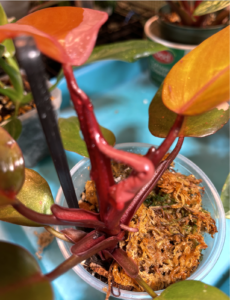Is importing really for you?
There is a huge trend around houseplants. This has resulted in a big interest in importing plants. It isn’t hard to do but it has some risk. You should also be prepared to rehabilitate the plants that have flown half way around the world. it will be a journey. Sometimes it’s easier to buy a plant in the US that already has roots and is actively growing. Only you can decide if you’re up for the journey. I have written this article so that people can go into importing plants with their eyes wide open. We will share our good and bad experiences.
You should really ask yourself why do you want to import? If it is to save money you may want to reconsider that reason. You may be able to get plants at a lower price but there are a lot of variables. The challenges are:
- The plants are stripped of all growing medium before they can be brought into the United States. This means that a percentage will not survive the process
- The plants are in a box for a number of days and may travel in a compartment where the temperature and pressure aren’t regulated
- It’s difficult to find a reputable seller
Ready to get started?
You can import up to 12 plants without having an import permit.
To import more than 12 plants, you will need to get an import permit. It’s an easy process and you can find the instructions here (coming soon).
Once you have ordered the waiting begins.
Plant preparation process
If your plants are coming from Southeast Asia countries such as Indonesia and Thailand the seller will do a number of things:
- They will apply for a photosanitary certificate which is required by the US government in order to import the plants.
- They will also prepare the plants by removing the growing medium from the roots. The roots are then wrapped in damp moss and plastic wrap in preparation for the trip to the US.
- The trip can take 4-5 days to weeks and possibly never arrive.
Unboxing and acclimatization
The long awaited day arrives and your box is at your door! So exciting!
Carefully unwrap your new plants and allow them some time to adjust to their surroundings. Put their roots in room temperature water and low light because they have been in a box for many days. Hold off on putting them in a heated area or a prop box with high humidity. Give them a couple days to rest. Think about the jet lag you feel after a trans-Atlantic flight!
Rehab the babies!
Remember how I said that this is a journey, well buckle up my friend, because this is where it gets real! Your plants will arrive with root systems that will be challenged. My guy references my prop box as the ICU. It’s true that in some cases you need to resuscitate the plants and bring them back to life.
Tips for unboxing and rerooting:
- I take the plastic off and put the moss covered roots in water. (I do this for domestically shipped plants too). It really prevents from accidentally tearing off roots. They need to be rehydrated. (I use water with SuperThrive at double strength – 1/2 tsp per gallon water).
- After removing the moss, examine the roots. Trim off the rotted and damaged roots. I put them in the rooting medium, then check them after 3-4 days. Then I trim them again because there’s usually more that have died. You don’t want the rotting roots to spread. (If you do experience rot – you can stop it by soaking the roots/stem in 1 cup of water with 8 ml of hydrogen peroxide for a half hour, then soak and rinse with clear water.
- The rooting medium depends on the plant. You have choices of water, moss, leca, perlite. (These will be described in specific articles and I will link to them).
The ICU (prop box for. your imported babies)

Growing those new roots is the most exciting and gratifying part of the process. I use the same set up for my imports that I use for propagation. You can read about my set up here. It consists of:
- a clear plastic box
- heating mat
- light
- humidity meter
- SuperThrive
- rooting mediums – leca, moss, large perlite, etc
Photo of fuzzy new roots on an imported Florida Ghost.
There you have it. It’s a journey but well worth it! As long as you follow the rules you should have good results.
Have you had good experiences around importing plants? Or a bad one? Do tell in the comments.








